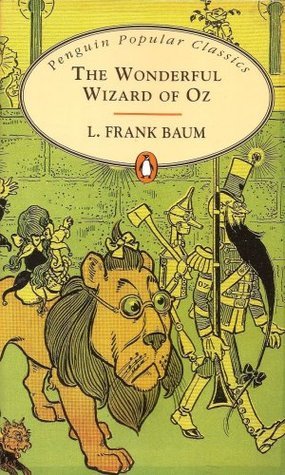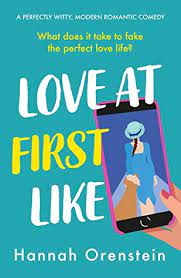
Introduction
The Wonderful Wizard of Oz, written by L. Frank Baum and published in 1900, is a timeless tale that has enchanted readers for generations. This beloved children’s novel tells the story of a young girl named Dorothy who is whisked away from her mundane life in Kansas to the magical land of Oz. Accompanied by her dog Toto, Dorothy embarks on an adventure filled with colorful characters, challenges, and self-discovery. This summary will explore the main characters, plot, setting, themes, author’s narrative style, point of view, and personal reflections on the book’s impact and relevance today.
Main Characters
Dorothy Gale: The Protagonist
Dorothy Gale is the heart of the story. A young girl living on a Kansas farm with her Aunt Em and Uncle Henry, she dreams of a life beyond her dull surroundings. Her motivation is simple yet profound: she longs to return home after being swept away by a tornado. Throughout her journey in Oz, Dorothy exhibits resilience, kindness, and determination. She befriends various characters who accompany her on her quest to find the Wizard of Oz, hoping he can help her return home.
The Scarecrow: Seeking Intelligence
The Scarecrow is one of Dorothy’s first companions. He desires a brain to think and make decisions. Despite his perceived lack of intelligence, he often demonstrates cleverness and resourcefulness throughout their journey. His character embodies the idea that intelligence comes in many forms and that self-worth is not solely defined by academic knowledge.
The Tin Woodman: In Search of a Heart
The Tin Woodman joins Dorothy and the Scarecrow on their adventure. He longs for a heart to feel emotions and love. His backstory reveals that he was once a human who lost his heart due to a series of unfortunate events involving a wicked witch. The Tin Woodman’s journey reflects the importance of empathy and compassion in human relationships.
The Cowardly Lion: Finding Courage
The Cowardly Lion represents the struggle for courage. He believes he is cowardly and seeks bravery from the Wizard. However, as the story unfolds, it becomes clear that he possesses courage within himself; he just needs to recognize it. His character challenges the notion that bravery is the absence of fear.
The Wizard of Oz: The Antagonist
While not a traditional antagonist, the Wizard represents deception and false authority. Initially perceived as a powerful figure capable of granting wishes, he ultimately reveals himself as an ordinary man using tricks to maintain control over the citizens of Oz. His character serves as a critique of those who wield power without true substance.
Plot
Main Conflict
The central conflict arises when Dorothy is transported to Oz after a tornado destroys her home in Kansas. Stranded in this fantastical land, she seeks a way back home. Guided by Glinda, the Good Witch of the North, she learns that the only way to return home is to visit the Wizard of Oz in the Emerald City.
Development
As Dorothy travels along the Yellow Brick Road, she encounters various challenges and adversaries, including the Wicked Witch of the West. Alongside her newfound friends—the Scarecrow, Tin Woodman, and Cowardly Lion—she faces trials that test their resolve and character.
Summary of “Something Is Killing the Children, Vol. 8” by James Tynion IV
Each character’s personal quest intertwines with Dorothy’s journey:
- Scarecrow seeks wisdom.
- Tin Woodman desires emotional depth.
- Cowardly Lion aims for bravery.
Together they confront obstacles that ultimately lead them to self-discovery.
Resolution
Upon reaching the Emerald City and meeting the Wizard, Dorothy learns that he cannot grant their wishes as they had hoped. However, through their experiences together, each character realizes they already possess what they sought—intelligence, compassion, and courage.
In a surprising twist, Dorothy discovers her silver shoes have magical properties that can take her home. With newfound confidence and understanding about herself and her friends’ strengths, she clicks her heels together three times and returns to Kansas.
Setting
The Land of Oz
The story unfolds in two primary settings: Kansas and Oz. Kansas is depicted as flat and colorless—a stark contrast to the vibrant world of Oz filled with fantastical creatures and colorful landscapes.
Influence on Characters
The setting plays a crucial role in shaping characters’ motivations:
- Kansas represents Dorothy’s longing for adventure.
- Oz symbolizes self-discovery and personal growth.
As Dorothy navigates through various regions of Oz—like Munchkinland, the Emerald City, and the Witch’s castle—each locale presents unique challenges that contribute to her development.
Themes
The Quest for Identity
A significant theme in The Wonderful Wizard of Oz is self-discovery. Each character embarks on a journey not just for physical goals but also for understanding their identities:
- Dorothy learns about courage and friendship.
- Scarecrow, Tin Woodman, and Cowardly Lion discover their inherent qualities.
This theme resonates with readers as it reflects universal experiences in seeking one’s place in the world.
Friendship and Companionship
Throughout their journey, friendship emerges as a vital theme. The bond between Dorothy and her companions illustrates how support can help overcome obstacles. Their collective experiences foster deep connections that enhance their individual strengths.
The Illusion of Power
Baum critiques authority through the character of the Wizard. Initially seen as all-powerful, he ultimately reveals himself as an ordinary man without real magic or authority. This theme encourages readers to question societal structures and recognize that true power lies within oneself.
Good vs Evil
The classic battle between good and evil is prevalent throughout the narrative. Characters like Glinda represent goodness while witches symbolize malevolence. This theme highlights moral choices faced by individuals in their journeys.
Author’s Narrative Style
L. Frank Baum employs an engaging narrative style characterized by simplicity and vivid imagery. His use of descriptive language brings characters and settings to life while maintaining an accessible tone suitable for children yet enjoyable for adults.
Baum’s storytelling includes humor and whimsy that captivates readers’ imaginations while conveying deeper messages about life’s complexities.
Author’s Point of View
The story is told from a third-person omniscient perspective that allows readers insight into multiple characters’ thoughts and feelings. This narrative choice enhances emotional depth as readers witness each character’s journey toward self-discovery alongside Dorothy’s quest.
Personal Reflection
Reading The Wonderful Wizard of Oz evokes nostalgia while offering timeless lessons relevant today—about courage in adversity or seeking one’s identity amidst chaos. Its exploration of friendship resonates strongly with contemporary societal values emphasizing community support during challenging times.
Moreover, Baum’s critique on authority remains pertinent today; it encourages critical thinking about power dynamics within our own lives—whether political or social—and inspires individuals to recognize their inherent strengths rather than relying solely on external validation.
Conclusion
The Wonderful Wizard of Oz remains an enduring classic due to its rich themes, relatable characters, and imaginative storytelling. Lyman Frank Baum crafts a narrative that transcends generations—inviting readers into a world where magic exists alongside profound truths about human nature.
Through Dorothy’s adventures in Oz—filled with trials leading toward self-awareness—the novel teaches invaluable lessons about identity formation through friendship while challenging perceptions surrounding authority figures’ power dynamics.
As we reflect upon this enchanting tale today—amidst our own journeys toward understanding ourselves—it serves as a reminder that sometimes we hold within us everything we seek; we just need courage enough to embrace it fully.

